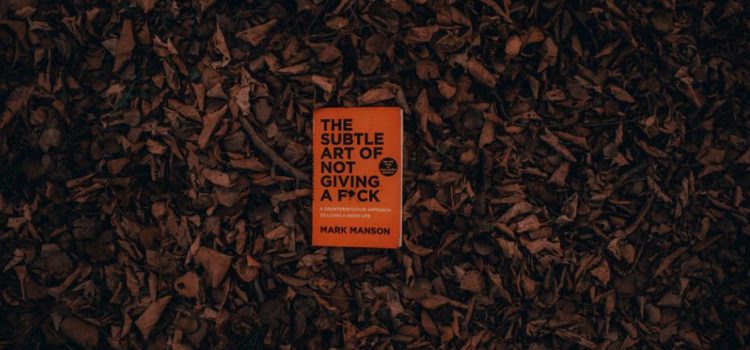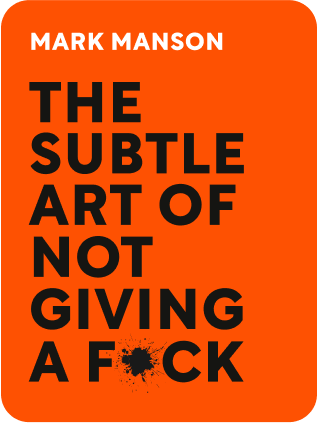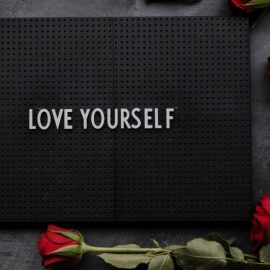

This article is an excerpt from the Shortform book guide to "The Subtle Art of Not Giving a F*ck" by Mark Manson. Shortform has the world's best summaries and analyses of books you should be reading.
Like this article? Sign up for a free trial here .
Is The Subtle Art of Not Giving a F*ck worth reading? Does the book live up to all the hype around it? What was the author’s key message?
The Subtle Art of Not Giving a F*ck isn’t your average self-help book. Mark Manson’s message is that you’re not special, it’s okay to feel bad sometimes, and society’s toxic positivity and self-help gurus are only making the problem worse.
Keep reading for The Subtle Art of Not Giving a F*ck review and background.
The Subtle Art of Not Giving a F*ck: Book Review
Despite its title, The Subtle Art of Not Giving a F*ck isn’t about not giving any f*cks; rather, it’s about giving f*cks about the right things.
Modern society tells us to care deeply about everything. We’re constantly told that we don’t have enough money, enough friends, enough stuff, or enough experiences—just consider how many “50 things you have to read/watch/see before you die” articles are out there.
Furthermore, the modern self-help movement teaches us that we should always feel happy and positive, and so when we don’t feel happy, we think we’re somehow failing. We feel constantly judged, both by others and by ourselves.
Therefore, the purpose of this book is to focus your f*cks; in other words, to help you identify what’s both truly important and within your control. By focusing your energy and attention on those things, you’ll find purpose and real happiness, rather than the shallow “good vibes” that the self-help movement would have you pursue.
About the Author
Mark Manson began his career as a blogger. In 2009 he published his first blog, which was focused on dating advice. In 2010 he launched a new blog called Post Masculine—however, that site no longer exists. Since 2013, Manson has maintained his blog at markmanson.net.
Manson holds a degree in International Relations and Business from Boston University.
Connect with Mark Manson:
The Book’s Publication
Publisher: HarperCollins Publishers
Imprint: HarperOne
The Subtle Art of Not Giving a F*ck, published in 2016, grew out of Manson’s 2015 blog post of the same title. It was Manson’s second book, preceded by Models: Attract Women Through Honesty (2011). The Subtle Art was his first bestselling hit, and paved the way for a follow-up book, Everything Is F*cked: A Book About Hope (2019), which, building on the popularity of The Subtle Art, debuted at number one on the New York Times bestseller list.
The Book’s Context
The Subtle Art of Not Giving a F*ck pushes back against the modern self-help movement, which author Mark Manson believes focuses too much on feeling good, rather than living well. This book argues instead that hardships are what give our lives meaning, that it’s impossible to be happy all the time, and that chasing endless positivity makes us focus on all the wrong things.
Manson mainly draws inspiration from three different philosophical traditions:
- Stoicism, which rejects chasing shallow emotions (such as “feeling good”) in favor of living by logic and duty.
- Existentialism, which focuses on personal growth through deliberate choices and acts of willpower.
- Buddhism, which is rooted in the idea that suffering exists; but that it will end, and that you have the power to end your own suffering.
Critical Reception
The Subtle Art of Not Giving a F*ck hit number one on the New York Times bestseller list. Many have praised Manson for his straightforward advice, and for going against the sugarcoated feel-good trends of other modern self-help books. The Huffington Post called Subtle Art “deeply inspiring,” while Kirkus Reviews praised it as a benchmark to compare other self-help books to.
However, The Subtle Art of Not Giving a F*ck‘s reviews were mixed—some have criticized the book for a lack of empirical evidence to back up its many assertions. Along the same lines, some of Manson’s critics argue that he’s just using his own life experiences to provide catch-all advice, which won’t work for many people.
Reviewers on Amazon have also blasted Manson for what they call a shallow understanding of Buddhism and Stoicism; they argue that anyone with even a basic grounding in philosophy won’t find anything new or interesting in Subtle Art.
Commentary on the Book’s Approach
Manson takes a blunt, no-nonsense approach in this book. He tells readers plainly that they’re not special, that they are sometimes going to struggle and fail, and that sooner or later they’re going to die—and that all of that is okay.
The Subtle Art of Not Giving a F*ck is a prime example of Manson’s signature writing style: conversational, to-the-point, and vulgar. In terms of content, it also follows Manson’s usual theme of getting what you want in life through hard work, brutal honesty, and constant self-improvement (instead of tricks, mind games, or “good vibes”).
Manson’s “tough love” approach isn’t for everyone; some readers will find him harsh and abrasive. However, others may appreciate this book’s brutal honesty and realism among all of the more stereotypical feel-good advice from other self-help writers.

———End of Preview———
Like what you just read? Read the rest of the world's best book summary and analysis of Mark Manson's "The Subtle Art of Not Giving a F*ck" at Shortform .
Here's what you'll find in our full The Subtle Art of Not Giving a F*ck summary :
- How to clarify what's important to you (and not just what you think should be important)
- Why it's okay for things to not always go well in life
- Why you need to care about fewer things






